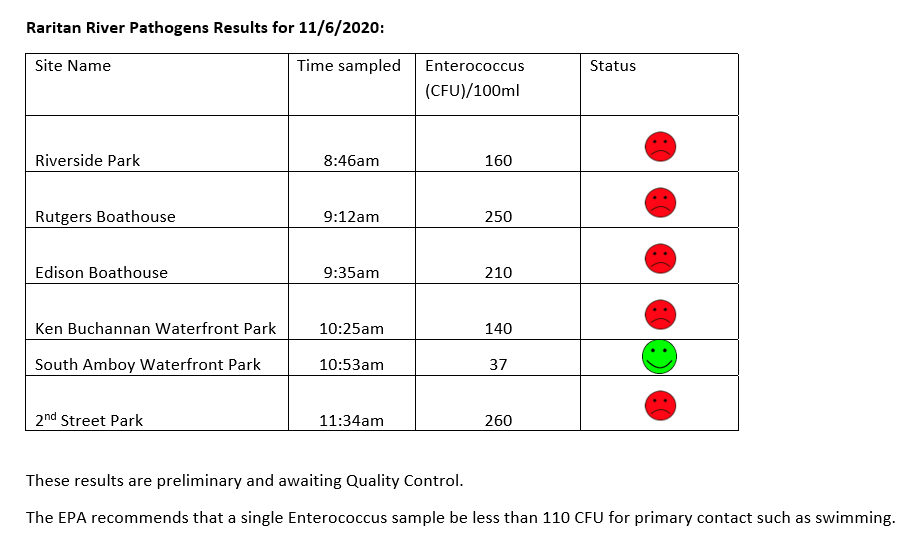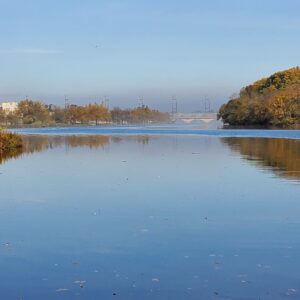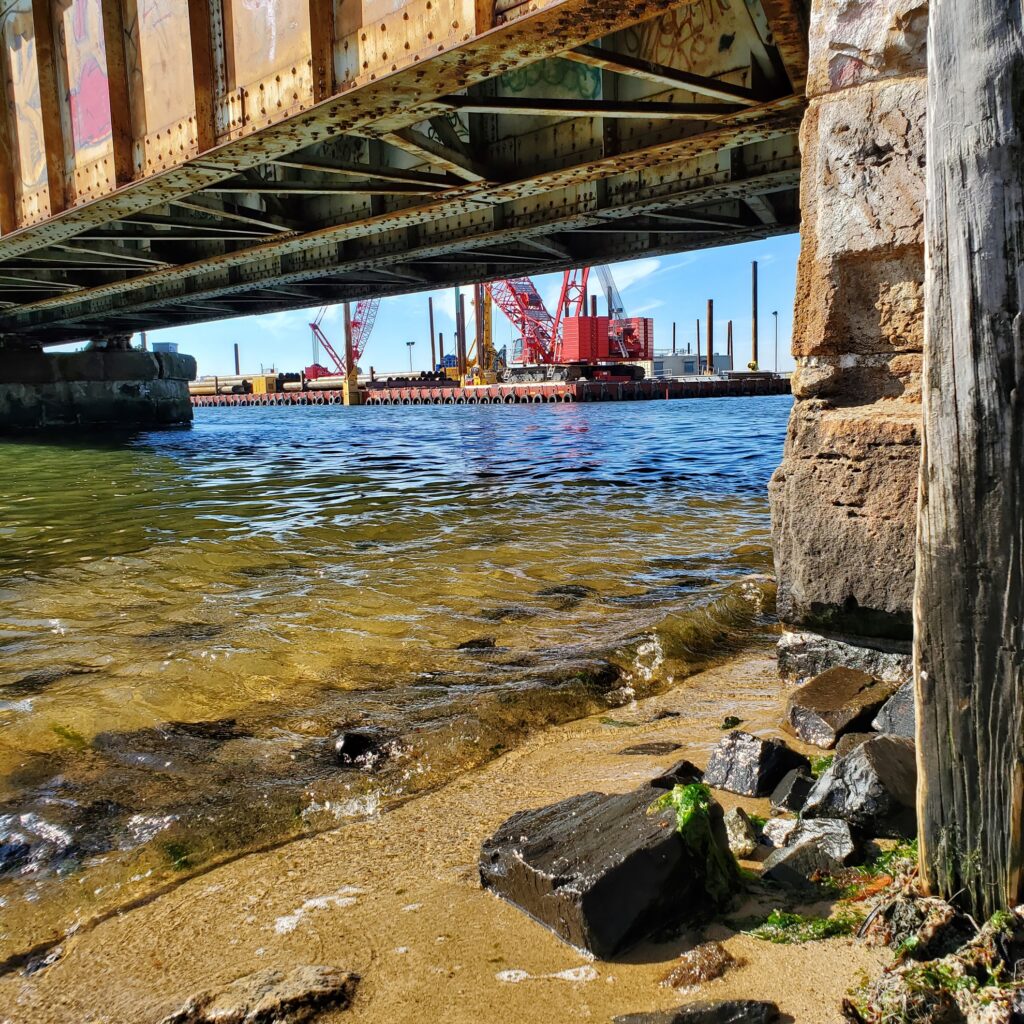That’s a wrap for 2020! Pathogens monitoring results for November 5
Yesterday was the last day of pathogens monitoring for 2020. Despite COVID-related challenges and the general difficulties of juggling an all volunteer program, we met EPA requirements for quality data and built a great data set. HUGE THANKS to our partners: Rutgers Cooperative Extension of Middlesex County and the Interstate Environmental Commission. And much gratitude to all our wonderful volunteer monitors! We couldn’t do it without you!
Below are our pathogens results for 11.5.2020, followed by field notes for the day.

The LRWP and Rutgers Cooperative Extension of Middlesex County monitor for Fecal Coliform and Enterococcus at six non-swimming public beach access sites along the Lower Raritan during the warmer summer months. Fecal Coliform and Enterococcus are indicators of disease-causing bacteria in our waterways.
The EPA recommends that a single Enterococcus sample be less than 110 Colony Forming Units (CFU)/100mL for primary contact. Enterococci levels are used as indicators of the possible presence of disease-causing bacteria in recreational waters. Such pathogens may pose health risks to people fishing and swimming in a water body. Sources of bacteria include Combined Sewer Overflows (CSOs), improperly functioning wastewater treatment plants, stormwater runoff, leaking septic systems, animal carcasses, and runoff from manure storage areas. Enterococci levels are often high after heavy or consistent rainfall.
Field notes for November 5, 2020
Another foggy start to the morning. Both our Riverside Park (Piscataway) and New Brunswick Boat House sites were gorgeous under a shroud of mist.

The views from our monitoring site in Perth Amboy are dramatic. To the left you look out to Raritan Bay and sailboats and huge ships heading into New York Harbor. To the right you look upstream, at the mouth of the Raritan, where the new “River Draw” train bridge is under construction.


So long, see you next year!


For what it’s worth your method of evaluating the data is childish and lack and qualitative or quantitative value. If we our goal is to measure the health of the Raritan River than your meaningly data set of 110 cfu give you no real indicators. Please do not take this personally; this is waste of time, money and provides no basis to make any meaningful decisions.
Bob: As I am sure you are aware, there are few if any TMDLs established for the Lower Raritan. Our work is in part designed to inform the potential to establish TMDLs for parameters that lead to high pathogens levels in our waterway.
More specifically, and more immediately, the Lower Raritan Watershed Partnership and our collaborators on this project are collecting pathogens data with multiple goals related to the health of the Raritan as it relates to public health risks. These goals include: 1) inform the general public about pathogens counts at non-bathing beach public access sites (where County and State Health Departments DO NOT monitor for pathogens) so that they can make informed decisions about recreating or fishing; 3) push the state to establish, per NPDES, TMDLs for stormwater runoff related to pathogens in our Lower Raritan, and thus require greater restrictions on increase in impervious cover and establish other controls on land use; and 3) to identify broken sanitary sewage infrastructure and hold those who manage this infrastructure accountable for its repair.
Given these stated goals, what approach do you suggest for our work?
Thanks Heather and the hole team of volunteers. Wish some of the results were different. Raritan needs some love. Thanks again
Thank you, Scott!